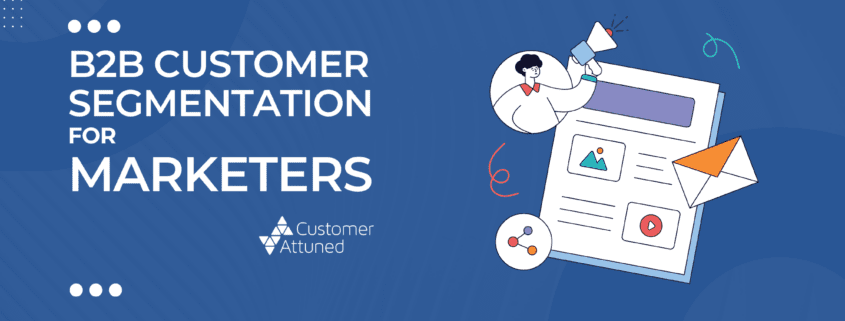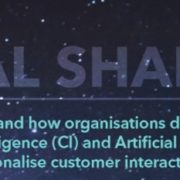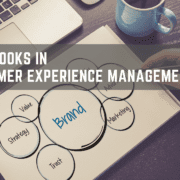The B2B Customer Segmentation Canvas for Marketers
Typically, Customer Segmentation helps marketers with lead generation, perhaps with a more targeted email campaign or even direct mail. We believe GREAT segmentation benefits more than marketers. In this series of posts, Customer Strategy Consultant Paul Cranston considers the benefits of using the B2B Customer Segmentation Canvas to segment your customer base for Sales and Customer Service teams and, in this first post, marketing teams.
The B2B Customer Segmentation Canvas is a new approach to segmenting customers and prospective customers. Unlike other approaches, it uses different dimensions to segment customers – the customer’s appetite and opportunity for additional purchases and the level of relationship and trust that a customer wants. Check out the full overview of the segmentation model on our Customer Segmentation Canvas page.
The B2B Customer Segmentation Canvas for Marketers
I confess that I have yielded to at least one Sales Manager when they have demanded that their email goes out to the whole database. I argued that the CRM, an underdeveloped and under used system, had very little information within it to make the emails effective! At times I was lucky if there was a company name, an email address and a contact’s name. Rarely was there something that allowed me to identify something that traditional segmentation would value – location, industry type, or turnover.
Email sends were predictably ineffective. But defining and implementing new CRMs has only marginally helped; we might have included data such as industry, sector, location, technology used… But on reflection, these have only ever provided incremental gains. It was experiences like this that drove the need to create and share this new approach.
Benefits of this New Approach
 Customer Attuned’s new approach to Customer Segmentation introduces new considerations that help marketers in very useful ways.
Customer Attuned’s new approach to Customer Segmentation introduces new considerations that help marketers in very useful ways.
1. It puts the customer first
Traditional segmentation considers attributes that can be irrelevant for many B2B suppliers: as mentioned above, turnover, location, etc. These are in no way considering the desires or even capability of the customer. Just because a company is co-located in London and New York, is listed on the London Stock Exchange and uses a particular technology already, there is no certainty that they will want or even need your product. Similarly with segmentation based upon turnover, just because they can afford your product, doesn’t mean that they want your product!
The Customer Segmentation Canvas is different. It relies on attitudinal and behavioural attributes of existing customers that can be used more accurately profile new targets. In fact, we recommend asking questions of your customers to better understand their wants!
2. High levels of Relationship and Trust bring value
The depth of relationship and trust between a customer and supplier is critical for success. Without a relationship there is no compulsion for a customer to stay, the transaction is one of convenience and price becomes a differentiator. With a relationship, there are a multitude of benefits available to an organisation:
- Retention
- Competitive advantage
- Insights
To explore this benefit there is a need to challenge the concept of value. Value is not always directly financial but can be realised in other ways. For example, a customer might give you strategic insights that help you develop your product that makes it more attractive to new customers. Or these same insights might help you break in to a new market. Both scenarios result in financial opportunities for growth. Similarly, value might take the form of a collaboration. The power of the customer’s industry knowledge and position alongside your ability to solve a problem, could result in impactful cases studies, industry leadership and other promotional opportunities that can get you in front of new customers.
So instead of segmenting by revenue, the Customer Segmentation Canvas positions customers in a way that helps you consider the value that they can / could bring you. Customers that love your product and service are more likely to be advocates. Therefore, while some will only buy your basic product or service, others will want more. Sometimes much more. Understanding the potential propensity for a customer type to purchase allows you to be more effective in your targeting.
3. It provides marketing objectives
The Canvas places customers on an axis which offers the opportunity for movement – actions that will reflect in the value to your organisation. Grow customers’ appetite for a product and grow sales, grow the depth of relationship and increase the opportunity for a renewal or collaborations.
For example, a Customer in Segment 1 may not love your product or service but are compelled to use it because, perhaps, of its low cost. There is a risk, therefore, that the purchase, being cost-based, is not repeated or renewed when a competitor undercuts your price. A campaign to grow the relationship can help influence a repurchase because they become more loyal.
Whereas a Customer in Segment 4 is likely to demonstrate love for the product or service and the business, and is more likely to not just consider a renewal but also the purchase of additional products or services. Marketing can target Segment 4 customers (and prospects that match the profile) with additional products.
With these examples in mind, the marketing objectives become apparent:
- Move a Segment 1 customer up to Segment 2, or 3 to 4
- Move a Segment 2 customer across to Segment 4, or from 4 to 6.
How Do You Move A Customer Through a Segmentation Model?
Build the relationship, the appetite and opportunities! (Our experts can help unpick this if you need it.)
Marketing is well-primed with the ability to design and send messages to customers that help build relationships through story-telling, case studies and more.
The B2B Customer Segmentation Canvas is, as far as I know, the first customer centric B2B segmentation model. In comparison with traditional segmentation methods, it offers a credible, actionable and valuable framework for marketers to work from.
Check out the model and its resources for yourself. If you need help segmenting at scale or implementing it within your CRM for systematic segmentation, please get in touch.
Download the workbook and blank canvas and the segmentation cheat-sheet by clicking on the icons below:
- The B2B Customer Segmentation Canvas for Marketers - June 12, 2024
- The Dimensions of the Customer Segmentation Canvas - April 10, 2024
- Is your company Customer Attuned? - June 15, 2022




